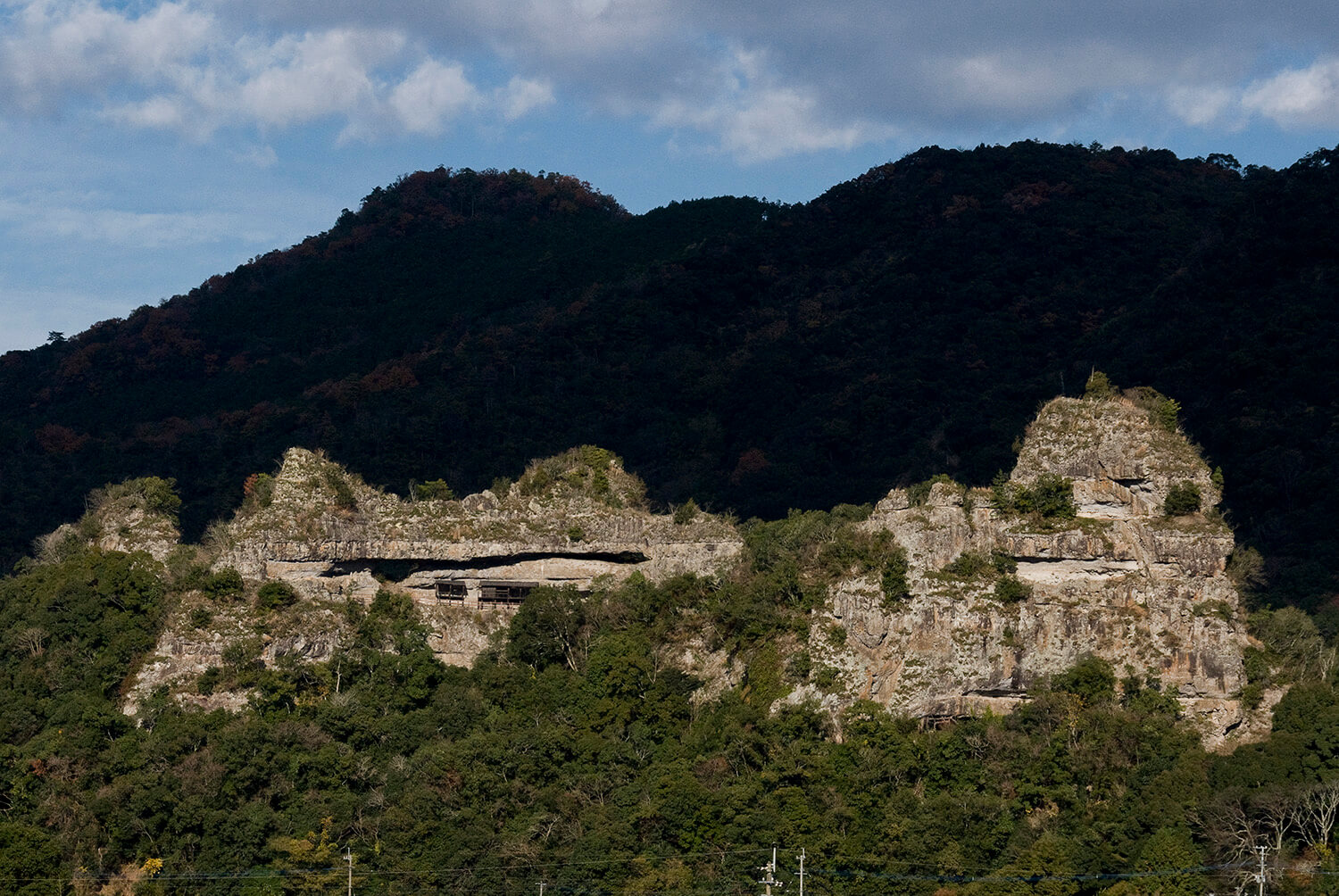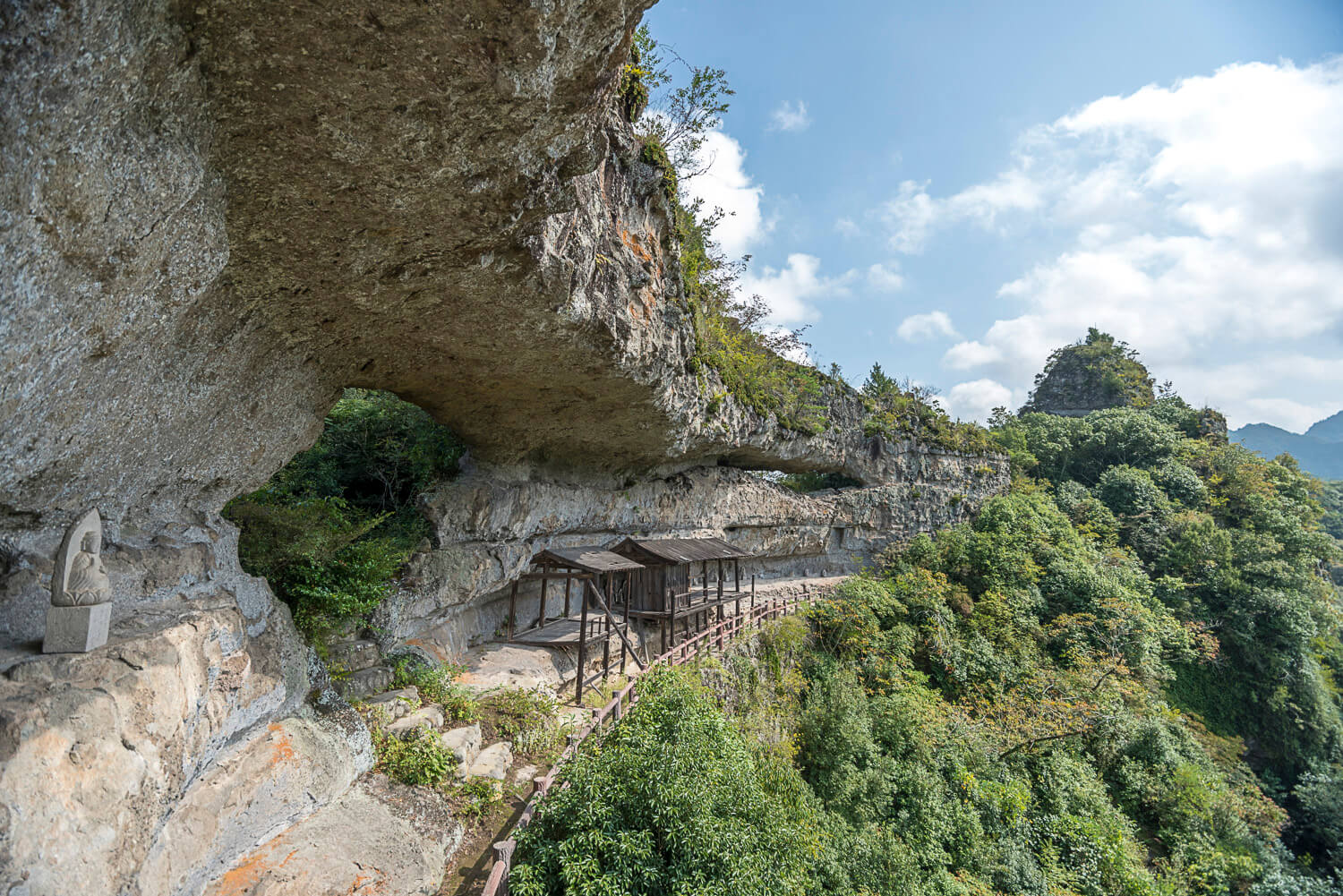表情豊かなー五百羅漢石仏ー
五百羅漢。それは仏教において釈迦に仕える500人の弟子たちのことを指します。耶馬渓の北部に位置する羅漢寺には、日本最古の五百羅漢が祀られています。
天然の石橋、絶壁を落ちる滝、大きな岩窟。室町時代の僧はこの奇岩の岩山を見て、羅漢たちが住むという聖地、中国の「天台山」を再現しようと岩から無数の羅漢像を彫ったのです。
奇岩の岩山ー古羅漢ー
鎖を伝う探勝道ー古羅漢ー
羅漢寺の目の前には、壁のように連なって立つ岩峰古羅漢があります。一番高い峰は「飛来峰(ひらいほう)」。天竺から飛んできたという中国の霊山「飛来峰」の名に因んでいます。天人橋は自然にできた岩の橋。その下の岸壁に懸けられたお堂では、観音菩薩が出迎えます
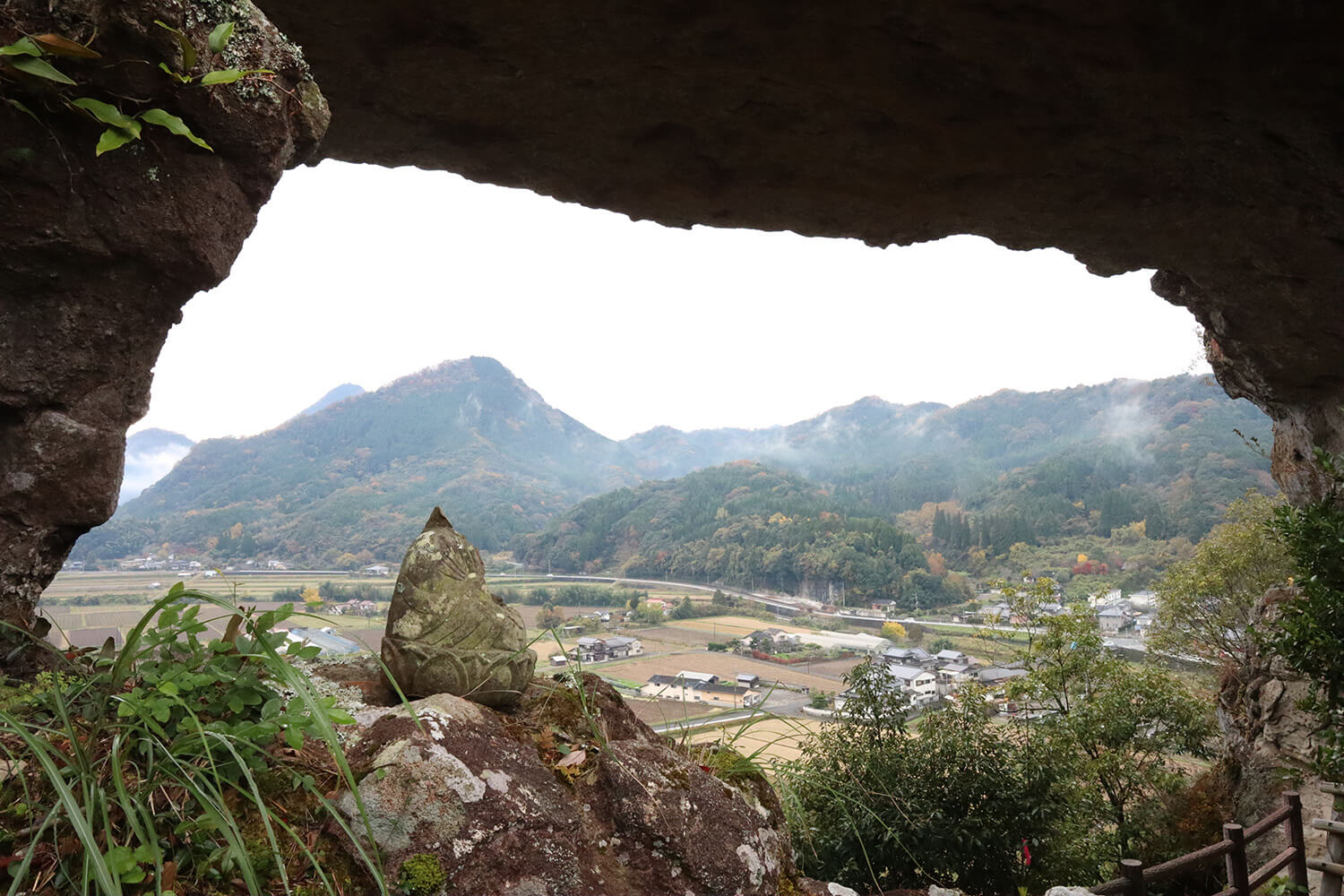
古羅漢の峰で仏に出会う
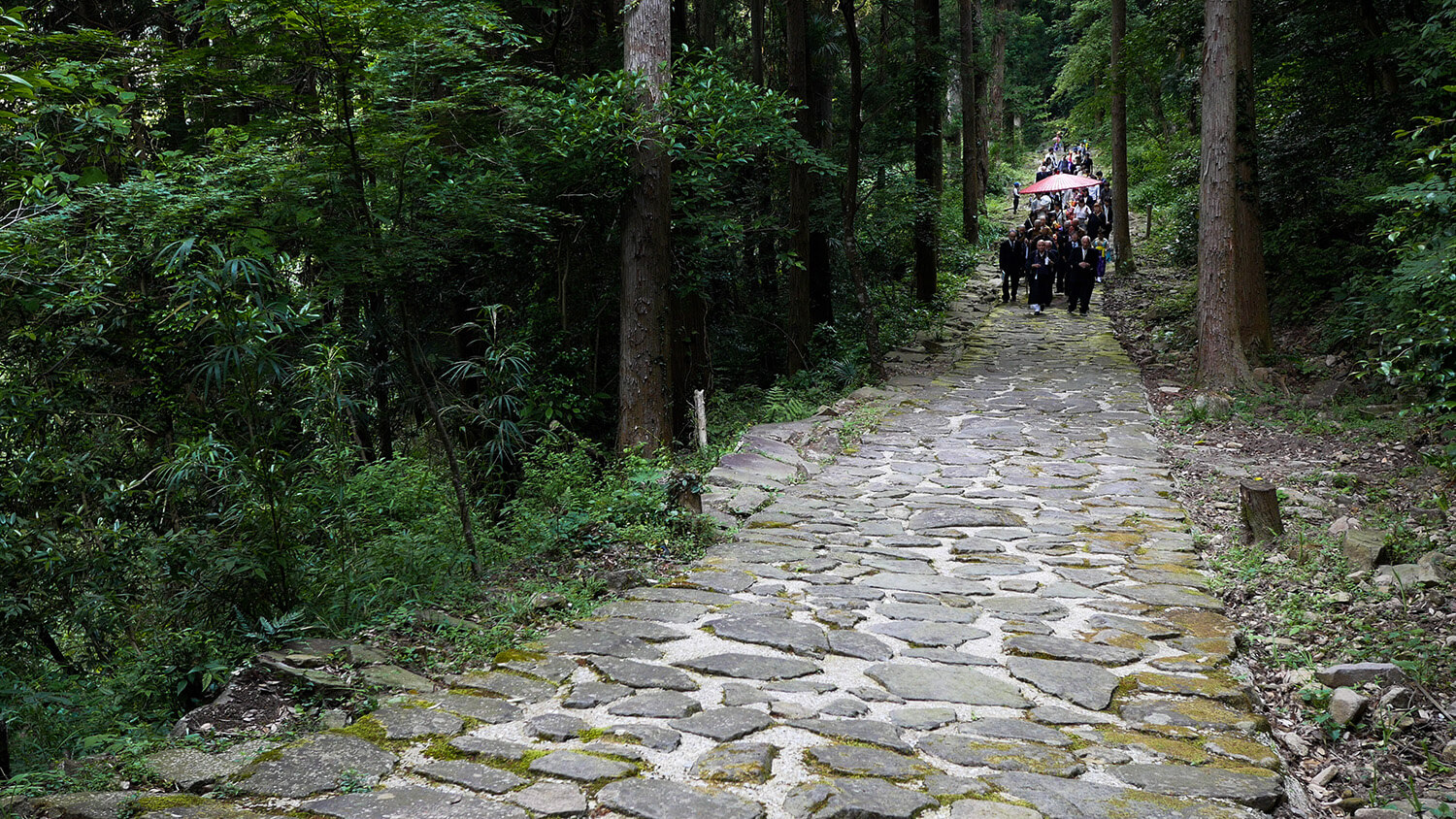
延々と続く石畳の羅漢寺旧参道
今はリフトで登れる羅漢寺ですが、この古羅漢の探勝道から岩をはい、鎖をたどり仏の教えを体感しつつ羅漢寺を目指す古来よりの道もあります。古羅漢の霊場をめぐり、苔むした旧参道の石畳を歩けば、一歩一歩、羅漢の聖地に近づいていきます。
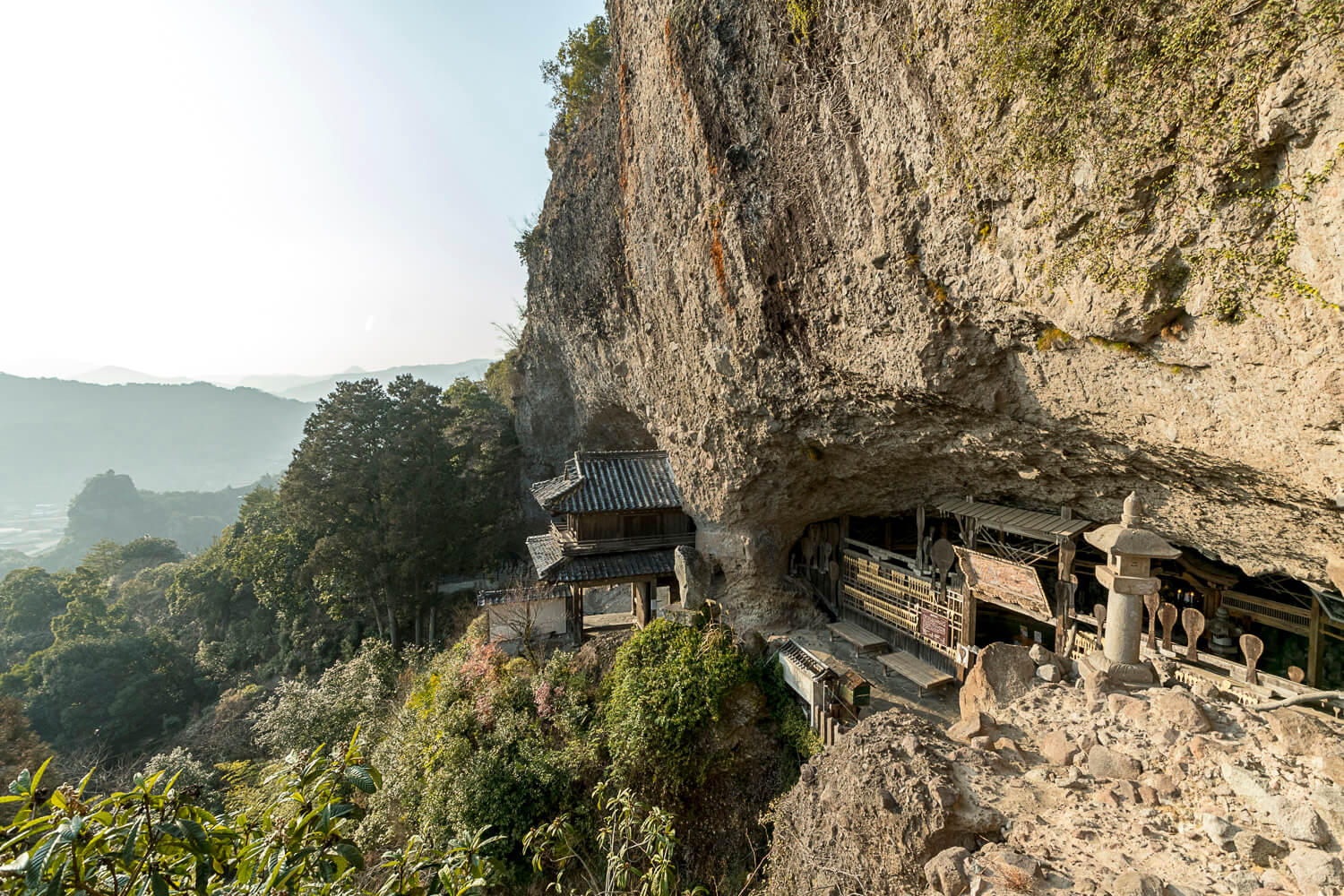
岩窟の寺院ー羅漢寺山門ー
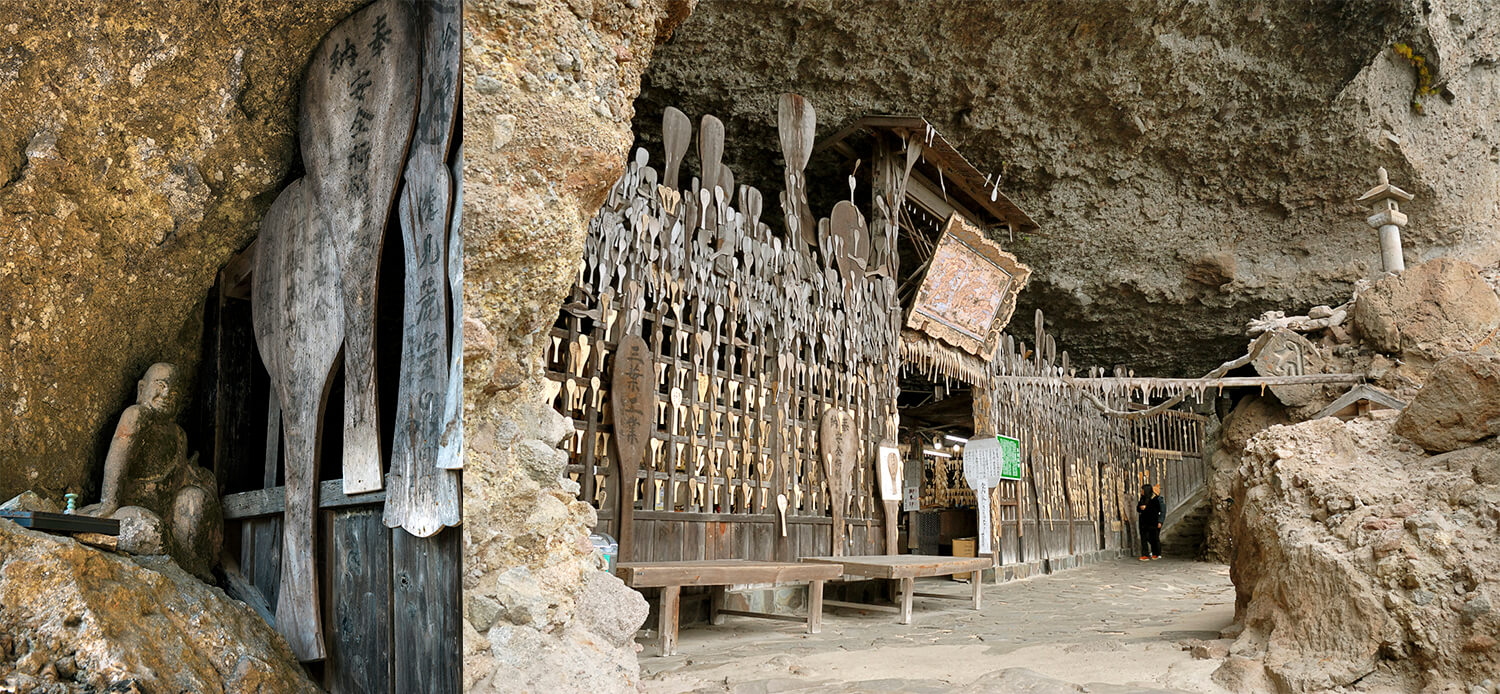
岩窟と、入り口に座るびんずる尊者
石段をのぼり山門をくぐれば、岩に溶け込む寺院があらわれます。「すくってください」の願いをこめた無数のしゃもじ。入り口には、釈迦にしかられ、650年間外にだされたままの羅漢「びんずる尊者(※1)」が岩にもたれて座っています。
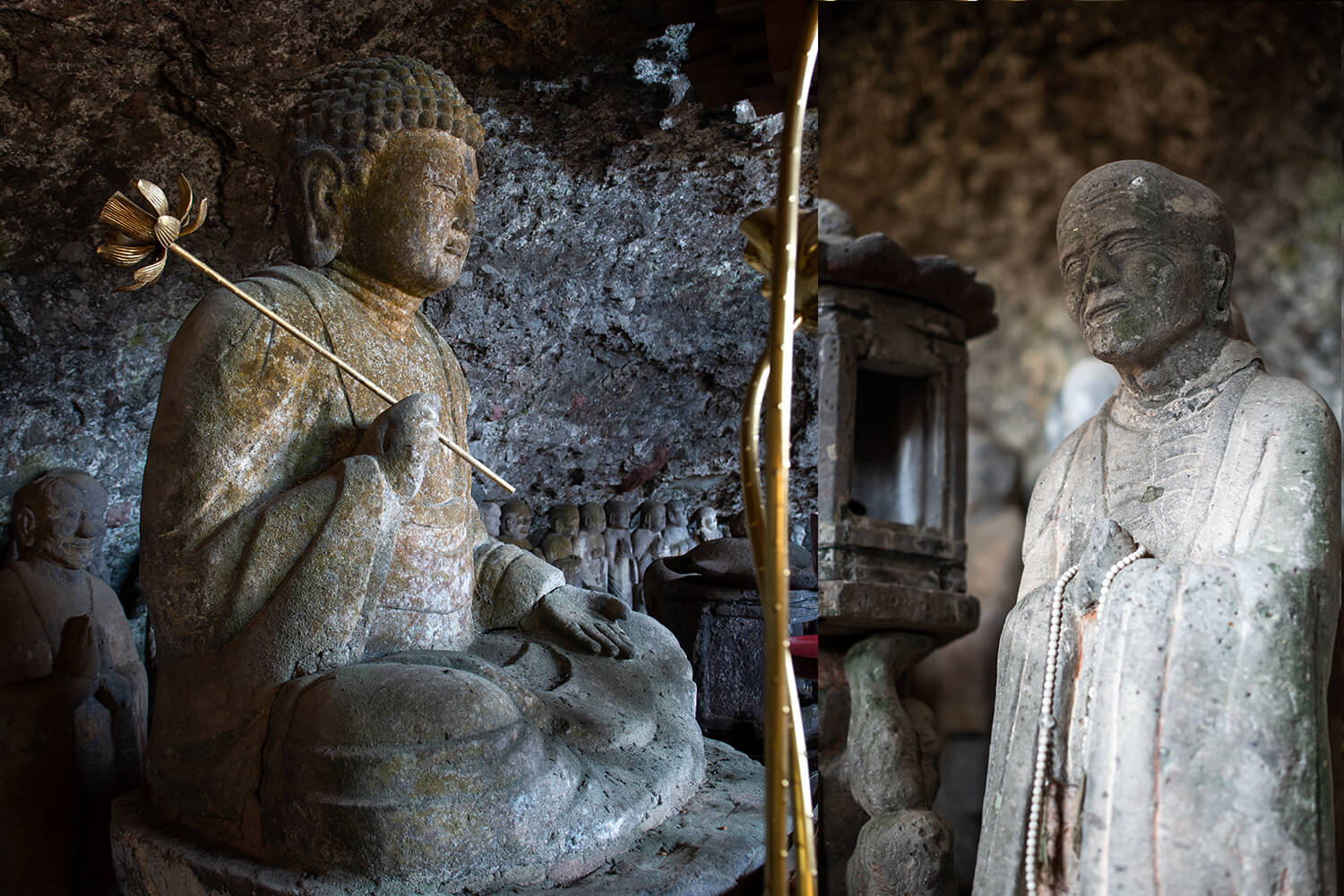
蓮を持つ釈迦と迦葉尊者
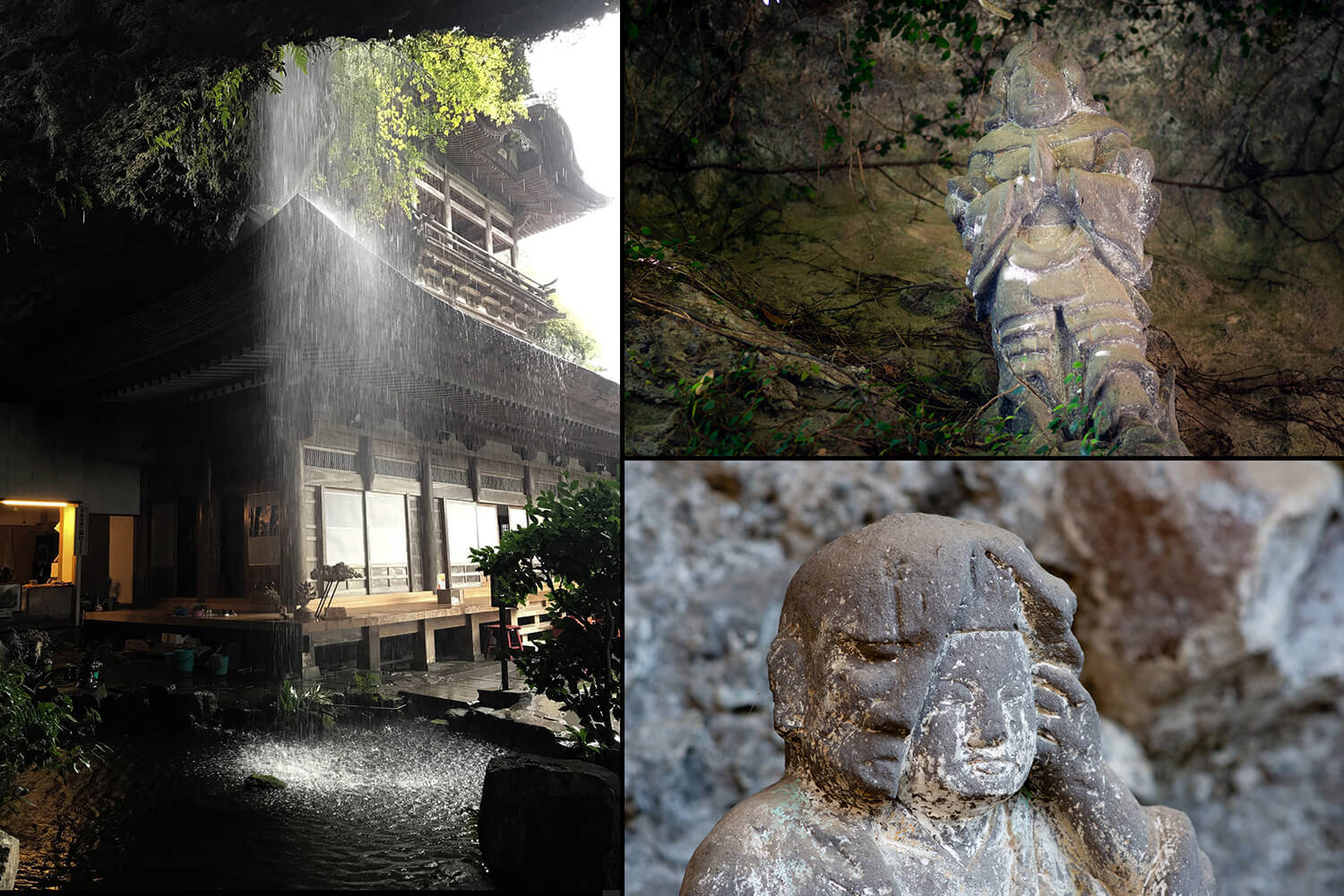
雨の日だけ現れる滝と仏たち
ある日釈迦は問いました。一本のハスの花をつまみ「・・・この意味がわかるか?」。年かさの「迦葉尊者(※2)」は意味を理解し微笑みました。滝に現れた韋駄天(いだてん)は、修行する羅漢たちを厳しく見守っています。「宝誌和尚(※3)」は自身の顔の皮をめくり、本性の観音菩薩をみせています。
経を読む、数珠を繰る、捉えた寅の歯を磨く・・・。石像たちの息遣い、衣擦れの音、喜怒哀楽を含む彼らの声がもれ聞こえそうな羅漢寺山内で、羅漢たちは今も修行を続けています。
※1:びんずる尊者(びんずるそんじゃ)=羅漢の一人。人々に軽々しく神通力を見せたので釈迦に叱責されて遠ざけられたという説話がある。 ※2:迦葉尊者(かしょうそんじゃ)=釈迦の後継者。羅漢の一人。 ※3:宝誌和尚(ほうしおしょう)=中国梁代の僧。顔が裂けて観音が現れたという伝説が、羅漢の説話に取り入れられた。
Next inspiration
Other content
Creating the Sacred Place of the Rakan
Full of Expression – Gohyaku-Rakan Sekibutsu (Stone Statue of 500 Arhats) –
Gohyaku-Rakan refers to the 500 disciples who attended the buddha Shakyamuni. The oldest Gohyaku-Rakan statue in all of Japan is enshrined within Rakanji Temple located in the northern part of Yabakei.
The natural stone bridge, the waterfalls spilling over steep cliffs, the large rocky caverns—the monks of the Muromachi period saw these rocky mountains of strangely shaped stone and attempted to reproduce Tiantai Mountain of China, the sacred place in which the Rakan are said to live, by carving countless statues in the stone.
Rocky Mountains of Strangely Shaped Stone – Furu-Rakan –
Sightseeing Path Running Along Chains – Furu Rakan –
Right in front of Rakanji Temple are rocky peaks extending out like a wall known as Furu-Rakan. The highest peak is called Hiraiho. It is named for the sacred Chinese mountain by the same name which is said to have flown in from ancient India. Tenninbashi is a naturally-formed stone bridge. The bodhisattva of compassion, Kannon, greets visitors at the temple hanging on the steep cliff below.

Meet With a Buddha on the Peaks of Furu-Rakan

Endless Sprawl of Stone Pavement on the Former Road Leading to Rakanji Temple
The climb to Rakanji Temple can now be made by lift, but there is also an ancient road where people would crawl up the rocks from this Rakanji Temple sightseeing path and follow the chains while experiencing the teachings of Buddha firsthand as they headed for Rakanji Temple. Each step around the sacred grounds of Furu-Rakan and down the moss-covered former temple road made of stone brings you closer to the sacred place of the Rakan.

Stone Cavern Temple – The Rakanji Temple Gate –

A Stone Cavern and Binzuru-Sonja Sitting in the Entrance
After climbing the stone stairway and passing through the temple gate, a temple appears which blends into the stone. Countless rice scoops can be found here which bear the meaning of “sukutte-kudasai” (double meaning: please help/scoop). In the entrance, a Rakan known as Binzuru-Sonja (*1), who was admonished by Shakyamuni and left outside for 650 years, sits leaning against the rock.

Kasho-Sonja and Shakyamuni Holding a Lotus

Buddhas and Waterfalls Which Only Appear on Rainy Days
One day, Shakyamuni asked a question. Picking a single lotus flower, he asked, “…do you know what this means?” The elderly Kasho-Sonja (2*) understood the meaning and smiled. The Skanda which appeared in the waterfall watches over the Rakan in their ascetic practices with stern eyes. Hoshi-Osho (*3) is peeling back the skin of his own face to show his true nature—the bodhisattva Kannon.
Reading the Buddhist scriptures, counting rosary beads, polishing the teeth of a captured tiger—on Mt. Rakanji, where it almost seems as if one can hear the breathing, rustling of clothes, and voices full of human emotion coming from the stone statues, the Rakan continue their ascetic training even now.
*1: Binzuru-Sonja – One of the Rakan. There is a narrative about him where he is said to have been sent away from Shakyamuni for carelessly showing his divine power to others.
*2: Kasho-Sonja – Shakyamuni’s successor. One of the Rakan.
*3: Hoshi-Osho – A monk of the Liang Dynasty of China. A legend about him stating that his face split open to reveal Kannon was adopted into the narrative of the Rakan.
Next inspiration
> episode 1 Listen Intently to the Pulse of the Land
> episode 2 See Gods and Buddhas in the Rock
> episode 4 Cutting Out the Scenery
Other content


